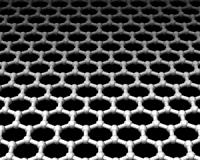 |
Calgary, Canada (SPX) Apr 27, 2011 When it comes to dreaming about diamonds, energy efficiency and powerful information processing aren't normally the thoughts that spring to mind. Unless, of course, you are a quantum physicist looking to create the most secure and powerful networks around. Researchers at the University of Calgary and Hewlett Packard Labs in Palo Alto, California, have come up with a way to use impurities in diamonds as a method of creating a node in a quantum network. In addition to making powerful and secure networks, this discovery may also help sensitive measurements of magnetic fields and create new powerful platforms useful for applications in biology. "Impurities in diamonds have recently been used to store information encoded onto their quantum state, which can be controlled and read out using light. But coming up with robust way to create connections needed to pass on signals between these impurities is difficult," says Dr. Paul Barclay, who recently moved to Calgary to start labs at the University of Calgary in the Institute for Quantum Information Science and at the National Institute for Nanotechnology in Edmonton. "We have taken an important step towards achieving this," adds Barclay. Barclay and colleagues Dr. Andrei Faraon, Dr. Kai-Mei Fu, Dr. Charles Santori and Dr. Ray Beausoleil from Hewlett Packard have published a paper on their research in the journal Nature Photonics. Impurities in diamonds are responsible for slightly altering the material's colour, typically adding a slight red or yellow tint. The "NV center" impurity, which consists of a nitrogen atom and a vacancy in otherwise perfect diamond carbon lattice, has quantum properties that researchers are learning to exploit for useful applications. In principle, individual particles of light, photons, can be used to transfer this quantum information between impurities, each of which could be a node in a quantum network used for energy efficient and powerful information processing. In practice, this is challenging to demonstrate because of the small size of the impurities (a few nanometers) and the experimental complexity that comes along with studying and controlling several nanoscale quantum systems at once. Researchers at Hewlett Packard Labs and Barclay, who worked on this research at HP and is now a professor in the Department on Physics and Astronomy at the University of Calgary, have created photonic "microring resonators" on diamond chips. These microrings are designed to efficiently channel light between diamond impurities, and an on-chip photonic circuit connected to quantum impurities at other locations on the chip. In future work, this microring will be connected to other components on the diamond chip, and light will be routed between impurities. "This work demonstrates the important connection between fundamental physics, blue sky applications, and near-term problem solving. It involves many of the same concepts being pushed by companies such as HP, IBM, and Intel who are beginning to integrate photonics with computer hardware to increase performance and reduce the major problem of heat generation," says Barclay. The article, Resonant enhancement of the zero-phonon emission from a colour centre in a diamond cavity, is written Andrei Faraon, Kai-Mei Fu, Charles Santori and Ray Beausoleil (Hewlett Packard) and Paul Barclay (Hewlett Packard and University of Calgary), and is published in the recent on-line edition of Nature Photonics.
Share This Article With Planet Earth
Related Links University of Calgary Carbon Worlds - where graphite, diamond, amorphous, fullerenes meet
 New Fracture Resistance Mechanisms Provided By Graphene
New Fracture Resistance Mechanisms Provided By GrapheneTucson AZ (SPX) Apr 18, 2011 A team of researchers from the University of Arizona and Rensselaer Polytechnic Institute have increased the toughness of ceramic composites by using graphene reinforcements that enable new fracture resistance mechanisms in the ceramic. The research, lead by Assistant Professor Erica L. Corral from the Materials Science and Engineering Department at the University of Arizona in Tucson, and ... read more |
|
| The content herein, unless otherwise known to be public domain, are Copyright 1995-2010 - SpaceDaily. AFP and UPI Wire Stories are copyright Agence France-Presse and United Press International. ESA Portal Reports are copyright European Space Agency. All NASA sourced material is public domain. Additional copyrights may apply in whole or part to other bona fide parties. Advertising does not imply endorsement,agreement or approval of any opinions, statements or information provided by SpaceDaily on any Web page published or hosted by SpaceDaily. Privacy Statement |